2010
About Andrew Cusack
 Writer, web designer, etc.; born in New York; educated in Argentina, Scotland, and South Africa; now based in London.
Writer, web designer, etc.; born in New York; educated in Argentina, Scotland, and South Africa; now based in London. read more
News
Blogs
Reviews & Periodicals
Arts & Design
World
France
Mitteleuropa
Knickerbockers
Argentina
The Levant
Africa
Cape of Good Hope
Netherlands
Scandinavia
Québec
India
Muscovy
Germany
Academica
Martin Gardner
IT’S ONE 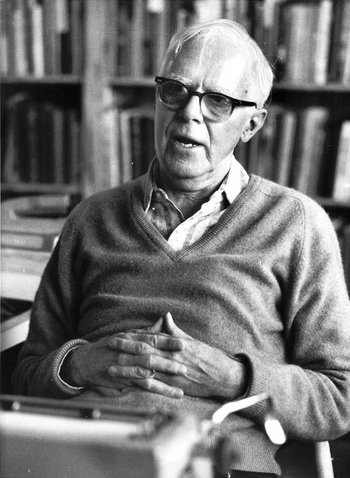 OF those strange things that I always automatically assume that anyone I know or have had dealings with cannot, by any stretch of the mind, be considered famous or well-known. The falseness of this assumption was made apparent to me when I picked up this week’s Economist after it arrived through the mail slot. As usual, there were a number of fascinating and well-informed articles, on the airlines of the Gulf, on the Colombian election, a special report on South Africa, and more. But then I finally reached the end pages and read the full page obituary of “Martin Gardner, man of letters and numbers,” who died on May 22nd at 95 years of age.
OF those strange things that I always automatically assume that anyone I know or have had dealings with cannot, by any stretch of the mind, be considered famous or well-known. The falseness of this assumption was made apparent to me when I picked up this week’s Economist after it arrived through the mail slot. As usual, there were a number of fascinating and well-informed articles, on the airlines of the Gulf, on the Colombian election, a special report on South Africa, and more. But then I finally reached the end pages and read the full page obituary of “Martin Gardner, man of letters and numbers,” who died on May 22nd at 95 years of age.
I never met Mr. Gardner but interacted with him several times during my New Criterion days by phone, and good old-fashioned post. He was a regular though not a frequent contributor to the magazine and was singular in that he was the only writer with whom the editor did not have the option of contacting via that nebulous mystery called the world-wide web. It was often, I confess, a source of some frustration that one would have all ones eggs in a row regarding pieces edited and signed off, and then there’d be something to do with Martin Gardner’s work and one would think “Blast! You mean I’ve got to stick this in an envelope to get the final OK?” Of course, when The New Criterion was founded, there was no internet, so there was a time when the whole magazine — indeed when every magazine — was put together via what I called the Martin Gardner method.
This aspect notwithstanding, it was always a pleasure working with Mr. Gardner, who was unfailingly polite over the phone when he would call in with his changes to our edits. It’s one of those inevitable aspects of death that one often discovers more interesting facts about the deceased than one ever knew while he was alive. In Martin Gardner’s case, it’s that this science maven published a number of annotated editions of works by G. K. Chesterton.
Roger Kimball writes of his last contact with Martin Gardner just a short time ago:
I wrote to tell him about the coincidence that a good friend now occupies the house he lived in for decades on Euclid Avenue (how’s that for an appropriate name?) in Hastings-on-Hudson, New York. I discovered this quite by accident. My wife and I were having dinner with a few other people at our friends’ house. I can’t remember Gardner’s name came up, but when it did I mentioned that he had lived for many years in Hastings-on-Hudson. “Yes,” said my friend, “and he lived in this very house.” One of the other couples present also knew Gardner. They recalled the time he invited them, shortly after they had moved to the neighborhood, to his house for drinks. Would it be alright if they brought their young children along, since no baby-sitter was available? Of course, nothing could be more agreeable! They arrived and Gardner proceeded to entertain the children with magic tricks for two hours.
My favourite story, however, is that he once wrote a devastating review of one of his own books and got it published under a pseudonym in the New York Review of Books. While he was a noted contributor to numerous sceptical reviews, he did come to a belief in God late in his life. “His declaration,” The Economist writes, “of this belief caused, he admitted, profound shock to those who knew him only as a sceptic. But there was too much playfulness in Mr Gardner to make him yield entirely to reason. His faith, he said, was based on an “emotional turning of the will”, unsupported by logic or science. It was his way, perhaps, of recognising that mind and man are not synonyms.”
Requiescat in pace.
What a Sad, Sad Life to Lead
While innocently playing billiards in a friend’s basement towards the later years of my school days, I was inexplicably forced to endure the latter portion of an episode of the HBO television series “Sex and the City”. The show centers on four middle-aged women who refuse to settle down and lead reasonable, ordered lives but instead involve themselves in ever more flippant affairs and commit ever greater sins against their own dignity. It would be a welcome warning to women were it not for the obvious fact that the show’s intent is to glorify the sad, pitiable existence lived out by the four main characters.
The show originated from a column of the same name in the New York Observer, and after the success of the television series, a cinematic continuation was filmed, followed by a more recent sequel.
Brendan O’Neill, a liberal atheist if ever there was one, has written a superb commentary on the second “Sex and the City” film, claiming that this “execrable” movie “offers an accidentally fascinating insight into the crisis of American values”. Click here to read O’Neill thoughts on the film and its sad reflection of today’s America, and say a little prayer that no-one really leads lives as self-centered, sad, and just plain pitiable as the characters involved.
Boom-studeer

At Stellenbosch, when the J.S. Gericke Biblioteek is full-up, students must use their ingenuity to find other suitable locations where they can study for their exams.
The Versatility of the Cape Dutch Style
ORANJEZICHT IS ONE of my favourite parts of Cape Town, nestled in the bowl between Table Mountain and Signal Hill. Its name betrays it’s sloping location, which offers a view towards the Oranje bastion, one of the five of the Castle, which take their name from the titles of William, the Stadthouder of the United Provinces. The architecture is generally handsome, even if it often tends towards the Victorian. A few years ago, Cape Town Daily Photo featured a view (above) of the corner of Montrose Avenue and Bo-Oranjestraat in Oranjezicht. The late-autumn/early-winter street scene focusses on the Oranjezicht Carlucci’s, one of a small chain of delicatessens and wine shops founded in the mid-1990s.
The architecture of the shop is by no means in the strictest confines of the Cape Dutch style but is instead a more modern design influenced by the local architectural tradition of the Cape. While the Cape tradition is better known for larger country houses and wine-growing estates or small cottages, it’s just as useful a guide in the urban context. Dating the age of the building just by this photo would be tricky, as the region has some fairly convincing recent structures built in the old style (the dovecot at Alphen, for example), but I’d wager it’s 1900s-1910s construction that underwent a substantial renovation in the 1990s. (more…)
The Presiding Officer’s Gown
While the  Westminster Parliament has a Speaker, the Scottish Parliament in Edinburgh has a “Presiding Officer” — a rather dull title if you ask me. The auld Estaits of Parliament abolished in 1707 were headed by the Lord Chancellor of Scotland, an office which fell into abeyance shortly after the Act of Union.
Westminster Parliament has a Speaker, the Scottish Parliament in Edinburgh has a “Presiding Officer” — a rather dull title if you ask me. The auld Estaits of Parliament abolished in 1707 were headed by the Lord Chancellor of Scotland, an office which fell into abeyance shortly after the Act of Union.
When the “Scottish Parliament” was refounded in 1997, the first man to hold the new job of Presiding Officer was Sir David Steel (the Rt. Hon. the Lord Steel of Aikwood), the despicable creature who as an MP introduced legal abortion to the United Kingdom in 1967, and who has inexplicably and disgracefully been created a Knight of the Most Ancient and Most Noble Order of the Thistle, the highest honour in the land (the Scottish equivalent of England’s Garter).
Anyhow, the St Andrews Fund for Scots Heraldry decided to commemorate the hosting of the Heraldic & Genealogical Congress in Scotland by commissioning a ceremonial gown for the Presiding Officer of the Scottish Parliament, who lacked one at the time. This rather handsome creation was presented to George Reid, the holder of the office at that time, during 27th International Congress of Genealogical and Heraldic Sciences held at St Andrews in 2006. Unfortunately I can find no evidence that this well-executed gown has ever been used. (more…)
The new Times of London online

IAM MILDLY obsessed with newspaper design (in case you hadn’t noticed that already). But even those few newspapers that manage to either be attractive or worth reading (or indeed both) usually have websites that are astoundingly ugly. Check out the websites of The Scotsman, Le Monde, or the Times of India. They vary from awful to “meh”. The website of The Hindu is ugly, but is being replaced by a much more handsome design. Despite the over-sized ad on the index page, Die Zeit‘s website is on the handsome side of things, but that of the Neue Zürcher Zeitung is a mixed bag, some well-done details here, other poor ones there. I despise lefigaro.fr, especially since they started charging for their e-paper edition. The structure and flow of telegraph.co.uk is actually good, but the detailing isn’t and (like faz.net) it poorly reflects its newspaper’s personality.
Along then strolls the once-venerable Times (f. 1785), with a brand spanking new website at thetimes.co.uk. Clear, orderly, precise in its details, and just plain handsome in its overall design. There’s nothing particularly special or over-the-top about it; it’s just well done, but that is shockingly rare for newspapers today. (more…)
Pure Democracy
“My firm conviction is that we of the conservative camp must put ourselves entirely onto a democratic basis. After the collapse of the old conditions nothing else can provide us with a future and a justification except pure democracy. Even if democracy has a dark side it is preferable to the quasi-democratic aristocracy of the representative system.” — Philipp Anton von Segesser, 1866
The Franco-Yorkshireman Jerome di Costanzo has an interesting article at OurKingdom on “You the People” Conservatism, interesting for the most part in that it has introduced me to Philipp Anton von Segesser, whom I had never heard of. I question, however, whether Jerome is correct to imply that Herr von Segesser and Mr. Cameron are quite such birds of a feather. The brilliance of the Swiss model — which Jerome rightly extols — is its democratic localism. But the Prime Minister is now seeking to introduce legislation which would set minimum prices for alcohol to avoid the almighty glut of cheap drink which (along with 24-hour openings) has contributed to the transformation of many British town centres into no-go-zones of public inebriation.
Would not the Swiss solution, instead, have been to merely devolve power either to counties (which barely exist anymore, and whose borders are in a state of permanent revolution) or to local town councils, and to allow them to react to the situation on the ground in a manner they deem appropriate?
Also, as Paul Mallinder points out, the government is attempting to solve a problem with a law, when really the only solution is a virtue. Virtues, though, are society’s responsibility, not the government’s. If people continually look to the government to solve problems by passing legislation instead of transforming society themselves by inculcating and promoting virtue, they deserve the nightmarish state they will end up with.
Reese Still Doesn’t Get It
“Reform movements need an enemy to organize against,” Fr. Thomas Reese, the former editor of America magazine tells TIME (which I stumbled upon at Conservative Blog for Peace). “As most bishops have gotten their acts together on sex abuse, they have looked less like the enemy and more like part of the solution. Enthusiasm for reform declined. With the Pope’s forthright response, it will decline even more.”
Bishops “getting their acts together” is reform! But of course, Fr. Reese is using the word “reform” in an Orwellian manner, meaning not reform, but in fact revolt. His use would be disingenuous, except that I suspect Fr. Reese has actually convinced himself it is appropriate: as the saying goes, “never attribute to malice that which can be adequately explained by …” well, let’s remain charitable and say “credulity”.
As bishops institute genuine reform, the sympathy — never more than limited — for progressive change-for-change’s sake unsurprisingly disappears except among the old die-hards like Fr. Reese. Enthusiasm for reform — genuine reform that is — only grows, especially in those places where it has been implemented, in accordance with the Pope’s clearly stated desires. If he is anything, Benedict XVI is a pope of reform, of putting the house back in order.
One almost feels a tinge of pity for the Fr. Reeses of this world as their hopes and dreams slip further and further away, but then one remembers it is entirely their own fault. He who marries himself to the Spirit of the Age is soon widowed. Attach yourself to the permanent things and you will never end up like poor Fr. Reese.
To London
Your humble & obedient scribe is hopping across the pond to London on Tuesday, but just for a week. As many of our dear readers already know, I am trying to escape the vile swamp of unemployment, and am attempting to find something productive (and, more importantly, remunerative) to do back over in the United Kingdom (or Ireland), where I hope to spend the rest of my life.
While most of our readers are Stateside, any of you who might have any good ideas, suggestions, or suitable persons to contact are warmly encouraged to email me at andrewcusack@yahoo.com.
“The Reality is Love”
“The doom and gloom conveyed by the media is not the full picture.”
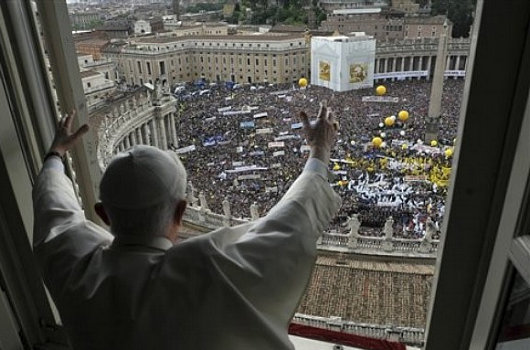
by HILARY WHITE
ROME, May 17, 2010 (LifeSiteNews.com) – There is one thing that still surprises me about Italy: the Italians love the pope. Even when they don’t necessarily listen to or obey him on every point, even when he is not an Italian, the Italians have a genuine and very warm paternal relationship with the holder of the Keys. This Sunday, 150,000 people packed into St. Peter’s Piazza to hear Benedict XVI give an address after reciting the Regina Caeli, and to show their Holy Father their love and support after the trying period of the last few months.
I suppose coming from the Anglo world, imbued with its perpetually simmering anti-Catholicism inherited from the Elizabethans and the Glorious Revolution, it will always come as a pleasant surprise to see that, whatever vitriol the mainstream media of the anglosphere continues to pour onto this papacy, that vitriol is not the reality. Whatever Reuters or the New York Times or even Ansa will tell you, the crowd of over 150,000 people gathered in St. Peter’s Piazza on Sunday were nearly beside themselves with joy to see their Papa.
 It has been unseasonably cold and raining more or less steadily for weeks, and being still something of a newbie around here, I had not expected to have to hurry on Sunday. Still thinking like an Anglo and not expecting the Italian enthusiasm for their pope, I had planned to make my way over to St. Peter’s Piazza about 11:30, and thought I could take a leisurely 9:30 train into the City and take the bus down to the Campo di Fiori to have a sandwich and a cup of awful Roman tea first. But in the café a television was playing live coverage of the Piazza and I could see the crowd was already, at 10:45, starting to fill the huge space. I took my panino di pollo to go.
It has been unseasonably cold and raining more or less steadily for weeks, and being still something of a newbie around here, I had not expected to have to hurry on Sunday. Still thinking like an Anglo and not expecting the Italian enthusiasm for their pope, I had planned to make my way over to St. Peter’s Piazza about 11:30, and thought I could take a leisurely 9:30 train into the City and take the bus down to the Campo di Fiori to have a sandwich and a cup of awful Roman tea first. But in the café a television was playing live coverage of the Piazza and I could see the crowd was already, at 10:45, starting to fill the huge space. I took my panino di pollo to go.
I had read that the Piazza could hold about 100,000 people, and remembered the day a couple of years ago when the Italians gathered to give a collective two-fingers-up to Rome’s heavily secularist Sapienza University, who had insulted their Holy Father by rescinding his invitation to speak. The English-language press was most reluctant to report that thousands of happy, shouting, smiling Sapienza students filled the square at the General Audience that week.
Today they are admitting that the Piazza held over 150,000 on Sunday, called together from all over Italy by a coalition of Italian lay associations – and that seems about right. What they don’t seem to want to report is the spell of joy that held them, many of whom waited for hours to see and hear and shout cheers to the pope. (more…)
Nuns!
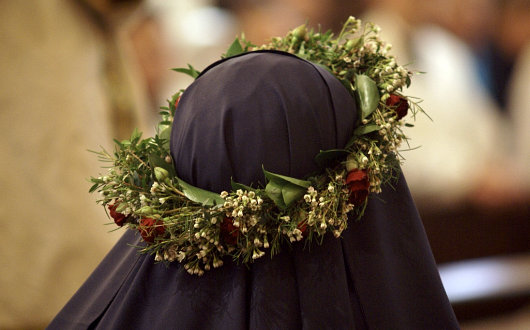
The author of Kansas Catholic was gracious enough to provide his readers with numerous photos of the recent profession of vows of the Benedictines of Mary, Queen of the Apostles that took place recently at Old St. Patrick’s in Kansas City, Mo. The Benedictines of Mary, Queen of the Apostles are a “traditional monastic community of women who desire to imitate the Blessed Virgin Mary in the giving of herself to God to fulfill His Will, especially in her role of assistance by prayer and work to the Apostles, first priests of the Catholic Church”.
Founded fifteen years ago in Pennsylvania, they accepted the invitation of the Most Rev. Robert W. Finn, the Bishop of Kansas City-St. Joseph, to move to his diocese in 2006. You can find out more about this relatively young community at their website here. (more…)
It helps to be a 92-year-old D-Day veteran
Daniel Hannan, the whiggish MEP representing South East England, relays a story about His Excellency Philip Hannan, the 92-year-old former Archbishop of New Orleans:
When Hurricane Katrina wrecked the city, the old prelate went to the diocesan office to help. He found his successor wracked with concern about the fate of a parish priest who was lost in the storm. Seeing that anxiety had left the poor man paralysed, my 92-year-old kinsman called the military authorities.
“This is Phil Hannan. I jumped with the 82nd Airborne at Normandy. I need a helicopter”.
A helicopter duly arrived, and carried the former army padre to the home of the missing cleric, which had been turned to matchwood. Returning to the archiepiscopal residence, Hannan announced without ceremony, “He’s dead, may he rest in peace. Let’s move on to the next problem”.
The Evolutionary Process
Readers might notice some recent changes in the design of ‘our little corner of the web’. Or not so much changes as little evolutions which yours truly has deemed worthy and appropriate. I’ll be the first to admit there’s a strong chance we’ve had a few too many evolutions of late. There was a November 2009 redesign and then February 2010, with a new nameplate just a few weeks later, and heck it’s only May now. God willing I’ll find a job soon and won’t have so much free time to fritter away redesigning andrewcusack.com.
There was scurrilous talk in some quarters decrying the loss of our somewhat Germanic-looking wordmark for a more Wall Street Journal-inspired typeface, which I completely ignored. Gradually, however, I began to rather miss it myself, and so it has been duly resurrected, as well as returned to its original home at the center (it had been flush-left). Those who approve may give their thanks to loyal reader Tim Conroy, who was ardently resolute in his centrist rhetoric.
This site functions thanks to the WordPress content management system, and I have designed the WordPress themes (which determine what the site looks like) myself. I had mentioned in November that the new theme was called ‘Goteborg’ (after the Swedish port of Gothenburg), which was replaced in February by ‘Elsenburg’ (a misspelling of Elsenberg, the country house turned agricultural college near Stellenbosch). This new theme, ninety percent of which is the same as Elsenburg, is called ‘Rouwkoop’, after the house I wrote about previously.
Comments and thoughts, whether in favour or against, are cautiously welcome, and of course do please let me know if you notice anything isn’t functioning.
St Andrews, William & Mary join forces
The oldest universities in Scotland and Virginia announce they will offer a series of joint degree programs
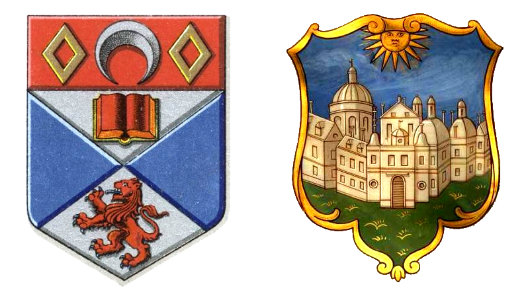
The University of St Andrews in Scotland and the College of William & Mary in Virginia are to begin offering joint degree programs starting in the autumn of 2011. Students admitted to the programs will receive a single Bachelor of Arts degree issued on behalf of both institutions — which will be the only B.A. offered by St Andrews, whose arts & humanities undergraduates typically graduate with an M.A.
The joint degrees will be available in four fields — history, international relations, English, and economics — with the aim of combining the depth traditional to the Scottish style of education with the breadth of William & Mary’s liberal curriculum. Students will spend the first year at their home university, followed by a second year abroad, with the remaining two years divided between the two. The program will start with about forty students divided between the two, with the hope to gradually double that size.
St Andrews is the oldest university in Scotland, and third-oldest in the English-speaking world. The College of William & Mary (now a university, despite its name) is the oldest in Virginia, the second-oldest in the United States, the third-oldest in North America, and the ninth-oldest in the English-speaking world. William & Mary, which is located in Virginia’s ancient capital of Williamsburg, has traditionally maintained links to Great Britain even after the Dominion of Virginia was recognised as independent in 1783. Queen Elizabeth II has visited the College twice, first in 1957 and more recently in 2007, and her former prime minister, Baroness Thatcher, served as Chancellor of the University.
Frederik van Zyl Slabbert, 1940–2010
FREDERIK VAN ZYL SLABBERT, former South African parliamentarian, politician, and briefly chancellor of Stellenbosch university, died last week in Cape Town. ‘Van’, as he was known, was convinced after a night of heavy drinking to stand as a parliamentary candidate for the Progressive Party in 1974 and won a surprise victory in the Rondebosch constituency against the United Party incumbent by 1,600 votes. Within three years he became head of the merged Progressive Federal Party, and became Leader of the Opposition in the House of Assembly in 1979.
Koos van der Merwe, currently Chief Whip of the Inkatha Freedom Party, served in parliament alongside the liberal van Zyl Slabbert while the former was still a member of the Conservative Party. “He was a parliamentarian par excellence,” van der Merwe said after Van’s death, “and I remember how once, in a mere three-minute speech, he practically annihilated P. W. Botha.”
Despite wide acclaim as one of the finest debaters in parliament, van Zyl Slabbert shocked the political establishment in 1986 by resigning because he was convinced that parliament had become irrelevant to the running of the country. His resignation nearly ruined the PFP and frayed van Zyl Slabbert’s relationship with his fellow MP, the late Dame Helen Suzman.
Just a year later he organised the first meetings between members of the banned African National Congress and a group of National Party politicians, Afrikaner academics, and businessmen. In later years he co-founded a black investment trust, was appointed chairman of the Johannesburg Stock Exchange, sat on the boards of a number of South African corporations, and worked for the Open Society Foundation. Van Zyl Slabbert was appointed Chancellor of the University of Stellenbosch — for whom he had played rugby as an undergraduate — in 2008 but resigned for health reasons a year later, and was succeeded by Johann Rupert.
Mr. van der Merwe continued:
What amazed me about Van Zyl Slabbert was the depth of his political knowledge and his wisdom. He knew and understood the policies of each political party better than they did themselves. On one occasion, at a seminar in Williamsburg in the U.S.A., I represented the Conservative Party and was confronted with questions I could not answer. I asked to be excused for a few minutes and went to van Van Zyl Slabbert and asked him how I, as a Conservative MP, should answer. He immediately gave me the right answers because he fully understood the views and beliefs of the Conservatives. And for that matter, each and every political party. He was in fact a mobile political library.
When the late Dr Treurnicht’s daughter approached Van Zyl Slabbert for assistance to move to the U.S.A. to marry a black man, Van Zyl Slabbert did not use that information against Treurnicht. At that stage, it was unthinkable for a white Conservative to marry a black man. News of Treurnicht’s daughter marrying a black man would have led to the end of Treurnicht’s political career. Van Zyl Slabbert confidentially told me the story but it never made the headlines. What an honourable man!
His part in the struggle for Afrikaans at Stellenbosch was indeed an eye opener. Where were the Verkramptes? The old Conservatives of which I was a member? Nowhere. The fight for Afrikaans was led by the “liberal jingoes” such as Van Zyl Slabbert, Hermann Giliomee, and Breyten Breytenbach. …
I also never once saw him angry.
Mooi loop, Van Zyl. Koos gaan jou mis.
Requiescat in pace.
In a Stellenbosch Garden
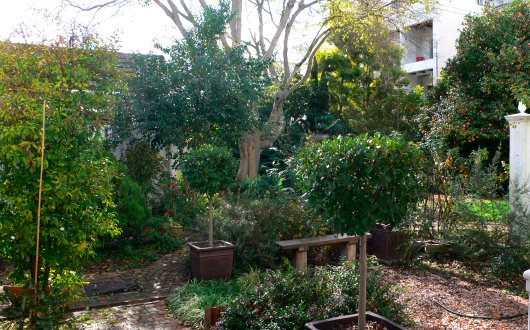
One of the pleasures of South Africa is that it is so conducive to the leafy things in life. Plants grow most of the year, so even while many of the trees may be bare, there is usually enough greenery about to keep things merry, as supported by the evidence of these shots of the garden of the little place in Stellenbosch where I used to live. Of course, this amenity to growth has its faults as well. Oak trees grow too quickly in this part of the world, leaving their wood too loose and unsuitable for use in barrelling. Wine- and brandy-makers must import their barrels from abroad, adding an irritating expense. Regardless of this incidental deficiency, South Africa still manages to produce some top-notch wines. (more…)
Swellendam Church Tower
In this video, the goodly folk of Swellendam demonstrate for us how not to remove a rotted wooden church tower. The little kid is a hoot — “It will get vrot and it will fall off on someone’s head”. The church tower has since been restored to its original iconic profile.
London Bridge City: The Neo-Venetian Scorned

JOHN SIMPSON AND Partners 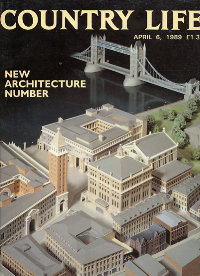 are one of the most prominent firms promoting classical architecture and urban design in Great Britain. They are perhaps most widely known for the work they did on the Queen’s Gallery at Buckingham Palace, as well as for the rejected scheme to redevelop Paternoster Square next to St. Paul’s Cathedral. Contemporary to their ultimately unsuccessful Paternoster Square bid was another ambitious scheme, Phase Two of the London Bridge City development. For Phase Two, Simpson composed a miniature Venice-on-the-Thames complete with Piazza San Marco and ersatz campanile. There seems, however, to be something just a bit un-English about the whole project. There are numerous examples of Ruskinian Venetian buildings throughout Britain, and indeed the Commonwealth, but an entire complex of Anglo-Neo-Venetian seems a bit over-the-top. Still, one can’t deny preferring a touch of Simpson’s over-the-top Venetian to the glass-plated boredom developers usually offer the public.
are one of the most prominent firms promoting classical architecture and urban design in Great Britain. They are perhaps most widely known for the work they did on the Queen’s Gallery at Buckingham Palace, as well as for the rejected scheme to redevelop Paternoster Square next to St. Paul’s Cathedral. Contemporary to their ultimately unsuccessful Paternoster Square bid was another ambitious scheme, Phase Two of the London Bridge City development. For Phase Two, Simpson composed a miniature Venice-on-the-Thames complete with Piazza San Marco and ersatz campanile. There seems, however, to be something just a bit un-English about the whole project. There are numerous examples of Ruskinian Venetian buildings throughout Britain, and indeed the Commonwealth, but an entire complex of Anglo-Neo-Venetian seems a bit over-the-top. Still, one can’t deny preferring a touch of Simpson’s over-the-top Venetian to the glass-plated boredom developers usually offer the public.
London Bridge City, Phase Two was proposed in the aftermath of the hugely popular speech by Prince Charles in which he condemned a planned modernist addition to the National Gallery as a “monstrous carbuncle on the face of a much-loved and elegant friend”. A bit of a donnybrook erupted between the architectural elite on the one hand (supporting the carbuncle) and the public on the other (supporting the Prince of Wales) and many a property developer was caught in the rhetorical crossfire. LBC’s backers decided, as an act of pragmatism, to come up with three radically different schemes in different styles and present them for consideration. (more…)
Titles in Afrikaans

ROYAL, NOBLE, AND common titles in Afrikaans are, like most of the language, descended from Dutch antecedents which, in turn, come from German. The Cape knew not the Kingdom of the Netherlands, which was established after the Dutch relinquished the colony, but was founded as an outlet of the Dutch East India Company (or V.O.C., to give its Dutch acronym). After a brief period of British occupation, Dutch dominion over the Cape returned during the Batavian Republic before finally being seized by the British in 1806 and erected as a British colony in 1814. When the Union of South Africa was created in 1910, the country had its first king, George V, though the sovereign was generally only referred to as ‘King of South Africa’ from 1927 onwards.
The country has had no emperors, though some like to attribute that title to Shaka, the greatest King of the Zulus. Typically, however, he is known as king (as in King Shaka International Airport, Durban’s brand new landing-place). South Africa’s royalty have tended to be either native (like Prince Nelson Rolihlahla Mandela) or German (like Prince Hubertus of Prussia, d. 1950, and a few Blüchers, etc.). (more…)
Victory+65 in Moscow

ANOTHER VICTORY DAY in Moscow — sixty-five years now since the Allied Powers defeated the crisply attired Axis of Nazi Germany and her slightly foppish cohort Fascist Italy. Russia commemorates V-E Day a day “late” because the German instrument of surrender entered into force at 23:01 CET on May 8, 1945 — by which time it was already May 9 in Moscow. For this reason most countries within the ex-Soviet sphere celebrate the end of the Second World War a day later than in western Europe. It is also customary on this day for patriotic citizens to wear the orange-and-black ‘Ribbon of St. George’, which recalls the Military Order of the Holy Great-Martyr and the Triumphant George established in 1769 and revived in 1994. The Order of St. George is the highest military honour awarded by Russia after the paramount Order of St. Andrew. (more…)
Search
Instagram: @andcusack
Click here for my Instagram photos.Most Recent Posts
- Bicycle Rack April 29, 2024
- Burns Tower April 19, 2024
- Patrick in Parliament March 18, 2024
- Articles of Note: 13 March 2024 March 13, 2024
- Cambridge March 9, 2024
Most Recent Comments
Book Wishlist
Monthly Archives
Categories


